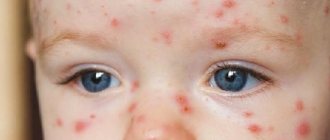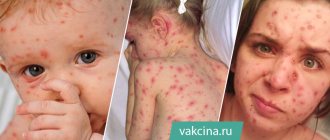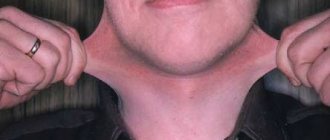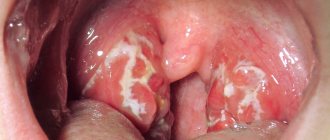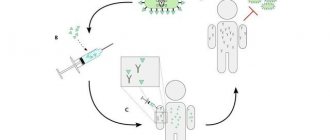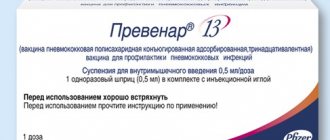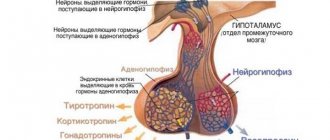Date of publication: 05/16/2018
Why does everyone have a chance to get chickenpox and what could be the consequences?
JSC Family Doctor - The beginning of chickenpox
The name “varicella” or “chickenpox” is telling (unlike many other diseases). This means that the disease was isolated quite a long time ago - before the era of developed medicine, and it was named by the people, and not by professional doctors, who would probably have used some Latin terms. The word “smallpox” shows that the disease necessarily occurs with rashes (the words “rash” and “smallpox” have the same root). “Chicken” is an indication of the volatility of the infection. Both are fair, and at the same time there is something to be deceived about.
Let's start with the fact that until the 18th century, chickenpox was considered a type (mild form) of smallpox itself (“natural smallpox” as it is now commonly called). At the same time, smallpox itself is a very serious disease (now disappeared thanks to vaccination), with a high probability of death, leaving permanent deep pits on the skin - pockmarks. Chickenpox is considered a mild disease for children, and the rash caused by it disappears quickly and without a trace. But only in 1772, the German doctor Vogel identified chickenpox as a separate nosological unit, coming up with a special name for it - varicella (diminutive of variola - the Latin name for smallpox), something like “smallpox”. The fact that smallpox and chickenpox are completely different diseases became completely clear later, already in the 19th century, when a smallpox epidemic swept across Europe. Against the backdrop of this terrible picture, it turned out that chickenpox had absolutely nothing to do with it. And today we know why this is so - smallpox and chickenpox are caused by different pathogens.
Wind also got into the name of chickenpox unjustifiably. Yes, chickenpox is a highly contagious disease. If one of your child’s classmates gets chickenpox, be sure that 90% of the class will get it (of course, if the guys haven’t had it before). But the wind will definitely not carry the virus into your window. The chickenpox virus (a type of herpes virus – Varicella Zoster) does not survive well in the external environment. Varicella Zoster is a record holder for virulence (the ability to infect the human body), in its case it is close to 100%; and in a closed room (classroom) one source of infection is enough to make many people sick. But in the fresh air the virus will quickly die. So why did people associate the disease with the wind? But because it is often impossible to say from whom you got infected. Chickenpox has a long incubation period (two weeks), during which there are no obvious symptoms of the disease, and the person may already be contagious. It has been established that you can become infected with chickenpox from a virus carrier 3-5 days before the rash appears. Being close to such a person, it is easy to get sick without even thinking that you are at risk of infection. Who infected whom can only be determined later, by who came down with a fever first or who developed a rash first.
Childish and harmless?
JSC Family Doctor - Chickenpox is a predominantly childhood disease
Chickenpox is considered a childhood disease. This does not mean that only children get sick, but if the probability of getting sick is very high, then, most likely, you won’t have long to wait until you get sick - childhood will not have time to end. Up to 6 months, the child is protected by innate immunity, but then the risk of getting sick increases. While a child is being raised at home, he does not have many places where he can encounter the virus, but when he begins to socialize - goes to kindergarten or school, an encounter becomes almost inevitable.
There are a lot of childhood diseases, and, as a rule, they try to prevent the disease, for which immunoprophylaxis is carried out - the child is given appropriate vaccinations. There are no vaccinations against chickenpox in the National Preventive Vaccination Calendar. Or rather, there is, but this vaccination is recommended only for those who are at risk (primarily those who have problems with immunity - HIV-infected people, cancer patients, those who suffer from severe chronic diseases). Why is that?
It is believed that you only get chickenpox once: a stable, specific immunity is formed that lasts a lifetime. That is, it is enough to get sick in childhood, and you will not encounter this disease again. In any case, this statement is true for the vast majority. In childhood, chickenpox is easily tolerated. But if childhood is behind you, and you haven’t encountered chickenpox, then it’s better to avoid it in the future. Adults suffer from this disease much worse. So, if you are an adult who has not had chickenpox, then it is better to play it safe and get vaccinated.
Vaccines
The chickenpox vaccines currently available on the market are produced using the so-called Oka VZV strain, which has been modified through sequential propagation in different cell cultures. Various formulations of such live, attenuated vaccines have undergone rigorous testing and have been approved for use in Japan, the Republic of Korea, the USA, and several European countries. Some vaccines are approved for use at ages 9 months and older.
From a logistical and epidemiological point of view, the optimal age for chickenpox vaccination is 12-24 months. In Japan and several other countries, one dose of vaccine is considered sufficient, regardless of age. In the United States, 2 doses of the vaccine given 4-8 weeks apart are recommended for adolescents and adults, of whom 78% seroconverted after the first dose and 99% after the second dose.
According to the current US vaccination schedule, children receive 2 doses of the vaccine (1st dose at 12 months, 2nd at 6 years).
More about vaccines
And here it is - chickenpox...
First, the child complains of feeling unwell: suddenly he has a headache, body aches, and a sore throat. It is clear that he is unwell, but what kind of illness is still unclear. Then (a few hours later or the next day) the temperature rises, and a rash appears against its background. However, there may be no fever or symptoms preceding it, but there will definitely be a rash.
The elements of the rash have their own “life cycle”: small red spots turn into bumps resembling mosquito bites (papules), then liquid accumulates in them (such elements are called vesicles). The vesicles burst, and crusts appear in their place, which then fall off, revealing clean skin. The transformation of papules into vesicles usually occurs within 24 hours; crusts appear a couple of days after the formation of vesicles. But they take longer to disappear – this can take up to two weeks.
The rash appears in waves, as people say - “sprinkles.” At the same time, there may be papules, vesicles, and crusts on the child’s body. On average, the rash period lasts from 5 to 8 days. It is believed that five days after the last elements of the rash appear, the child ceases to be contagious.
In other words, there is reason to believe that in just over a week the disease will pass, and it will leave behind a short-lived memory in the form of crusts, which will also disappear without a trace. It is hardly possible to speed up recovery. Therefore, all treatment for chickenpox is symptomatic. It is aimed at eliminating the problems that the disease brings with it. The first problem is temperature. If it is not high (and it may not exist at all) or if the child easily tolerates high temperature, it is better not to bring it down at all. Consult your doctor - he will tell you how to act specifically in your case.
JSC Family Doctor - Treatment of Chickenpox
The second problem is itching. The chickenpox rash is very itchy, but you can’t scratch it. The virus accumulates in the vesicles, and scratching can cause additional spread of the rash throughout the body. Also, damaged vesicles heal less well, their contents can fester (in this case, the vesicles turn into pustules), and in their place, pockmarked pits form, which do not disappear for a long time.
Make sure your child does not sweat: sweat increases the itching. Change your underwear more often.
In our country, it is customary to smear chickenpox rash with brilliant green. The treated vesicles dry out faster, preventing the possibility of their inflammation. This will not make the child recover any faster, but sanitary treatment of the rash is encouraged. In the end, brilliant green is a good marker: if you don’t need to smear anything else, it means the rash has stopped and the disease is over.
If new elements of the rash no longer appear, you can (and should) go for a walk with the child. However, you should stay away from other children, as it will still be contagious for some time.
When all the vesicles have crusted over, the child can be washed, but it is better not to use any shampoo or soap. Under no circumstances should you rub your child with a washcloth - touches should be gentle so as not to tear off the scabs. It’s better not to wipe it with a towel, but to blot it.
Sources
- Chicken pox: adults at risk. Excerpts from the state report “On the state of sanitary and epidemiological well-being of the population of the Russian Federation.” Publishing house “Russian Doctor”, November, 2021.
- Chickenpox. Mayo Clinic.
- Chebalina, E. A., et al. “Chicken pox in pregnant women: risk, prevention, diagnosis, management tactics (clinical lecture).” Medical and social problems of the world 19, no. 4 (2014): 74-82.
- Yushchuk N.D. et al. “Chickenpox in adults” Attending physician #01/00 (2000).
- Scott Frothingham. Chickenpox in Adults. Healthline. 2018
- TASS News Agency, “Production of a domestic vaccine against herpes zoster will begin in 2027.”
- Rusakov, V. A., A. V. Chebykina, and V. A. Maidan. “Methods of medical control of chickenpox incidence.” Bulletin of the Russian Military Medical Academy S1 (2018): 170-172.
It's more difficult with adults
In adults, chickenpox is usually more severe than in children. The duration of the disease increases. The prodromal period (preceding the appearance of the rash) lasts longer - up to 5 days. The temperature is often high (can reach 39-40 °C). The period of rashes also lengthens - on average it is 10 days. The rash covers not only the skin, but also the mucous membranes - nasopharynx, genitals. This can also happen in children (as an exception), but in adults such localization is typical (occurs in almost 100% of patients). Vesicles often turn into papules (that is, they fester). They get wet, heal poorly, and in their place pockmarked pits form. Various complications are possible.
Even for those who were sick in childhood and, it seems, should have immunity against chickenpox, the Varicella Zoster virus can give an unpleasant surprise. If for some reason (age, serious illness) general immunity is reduced, the disease may be in a different form - in the form of herpes zoster. Herpes zoster is caused by the same virus as chickenpox. The virus can sleep in the body, and then, under favorable conditions, become active. Or it can penetrate from the outside: if an elderly person happens to be next to a child suffering from chickenpox, this may be enough. Therefore, if you have a lowered immune system, it is better to take extra care.
First signs
How does chickenpox start in children? First of all, the child develops:
- high temperature (up to 39.5°C),
- feverish reaction;
- moderate intensity headache;
- pain in the abdominal area (not always);
- general malaise;
- signs of intoxication (possible nausea and vomiting);
The first signs of chickenpox in children, as a rule, are indistinguishable from “normal” ARVI. The main symptom of chickenpox is a characteristic rash (first small pink spots, and then blisters with clear liquid).
Chickenpox during pregnancy
If a woman did not have chickenpox as a child, she may become ill during pregnancy. In fact, the likelihood of this happening is low. Tests done on those who do not remember that they had chickenpox show that the vast majority (up to 90%) already have antibodies to Varicella Zoster in their blood, that is, they still had contact with the virus.
There is a group of infections united by the principle of danger to the fetus and the health of the unborn child - the so-called ToRCH infections. The chickenpox virus is not included in this group. Although the “H” in ToRCH stands for herpes, it refers to herpes infection types I and II (“herpes simplex”), not Varicella Zoster. Compared to classic ToRCH infections, chickenpox is less dangerous.
Still, it’s better to try not to get sick. If you have chickenpox in the first trimester, miscarriages and undeveloped pregnancies are possible. Sometimes chickenpox leads to congenital malformations and deformities of the child (congenital chickenpox syndrome) - in approximately 1% of cases. In general, the risk to the fetus during this period is about 5%. In the second trimester, the risk of any consequences is even lower (no more than 1-2%).
Chickenpox is most dangerous just before childbirth. If a mother gets chickenpox 7-10 days before delivery, then the child may be born already sick with chickenpox (about 10-20% of cases), and this is dangerous (various complications, even death). Therefore, during this period it is better to play it safe and exclude contacts with children who have not had chickenpox - potential virus carriers.
Make an appointment Do not self-medicate. Contact our specialists who will correctly diagnose and prescribe treatment.
General information about the disease
Chickenpox or chickenpox is an acute infectious disease that primarily affects children.
Children aged 5–9 years are most often affected. Only 10% of the total are teenagers over 14 years of age and adults1. For them, children with chickenpox become the source of infection. The causative agent of the disease is human herpes virus type 3 - Varicella Zoster. It is transmitted by airborne droplets (along with droplets of saliva from sneezing, coughing, etc.) or by direct contact with the affected skin of a patient.
According to statistics, from 500 to 800 thousand new cases of chickenpox are recorded annually: this is 570 cases per 100 thousand people. Peak incidence is autumn and winter1.
Important! The chickenpox virus is unstable in the external environment and can remain active for no more than 15 minutes. Despite this, it is capable of spreading over long distances with air currents, including into adjacent rooms through the ventilation system.
